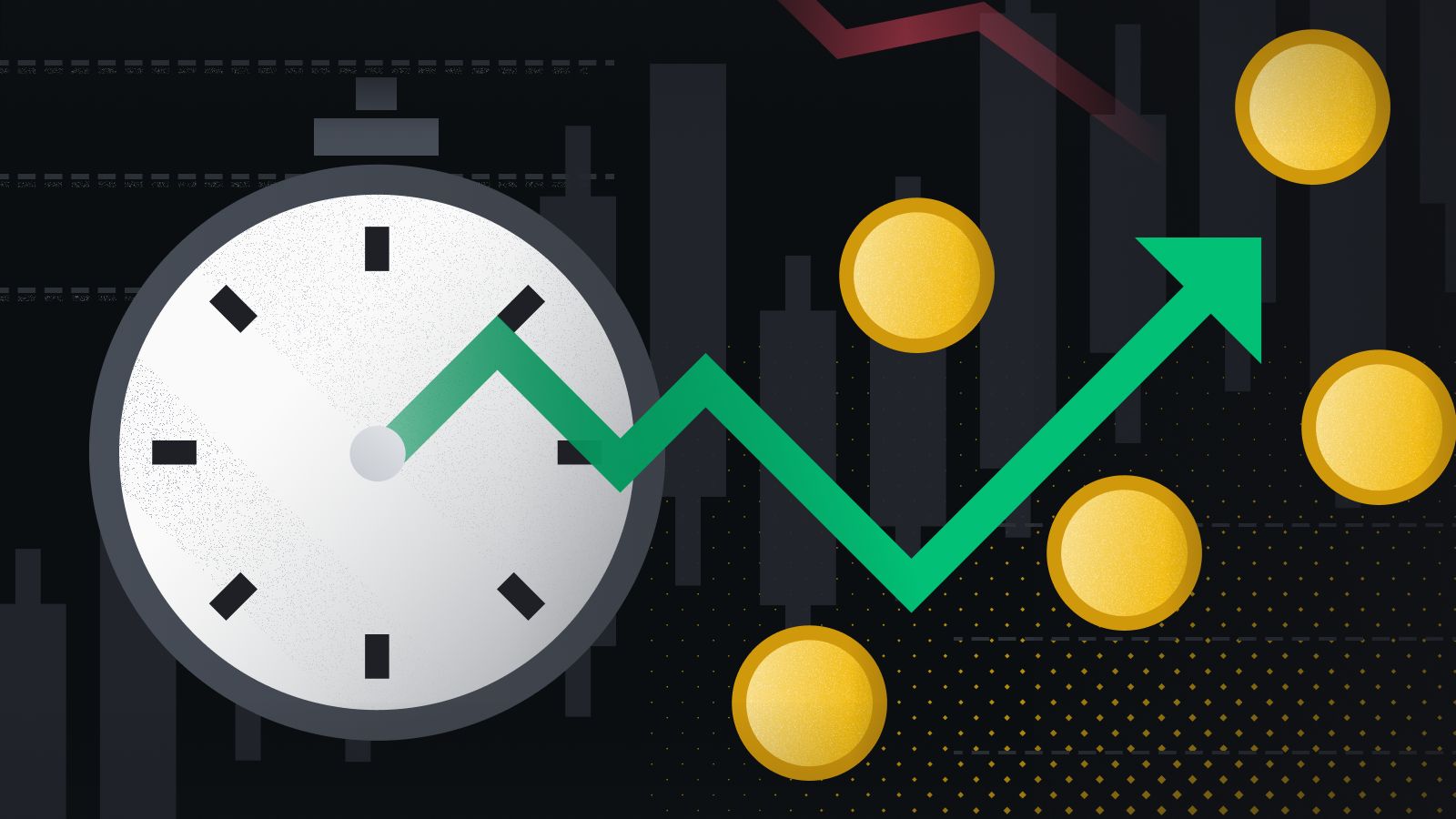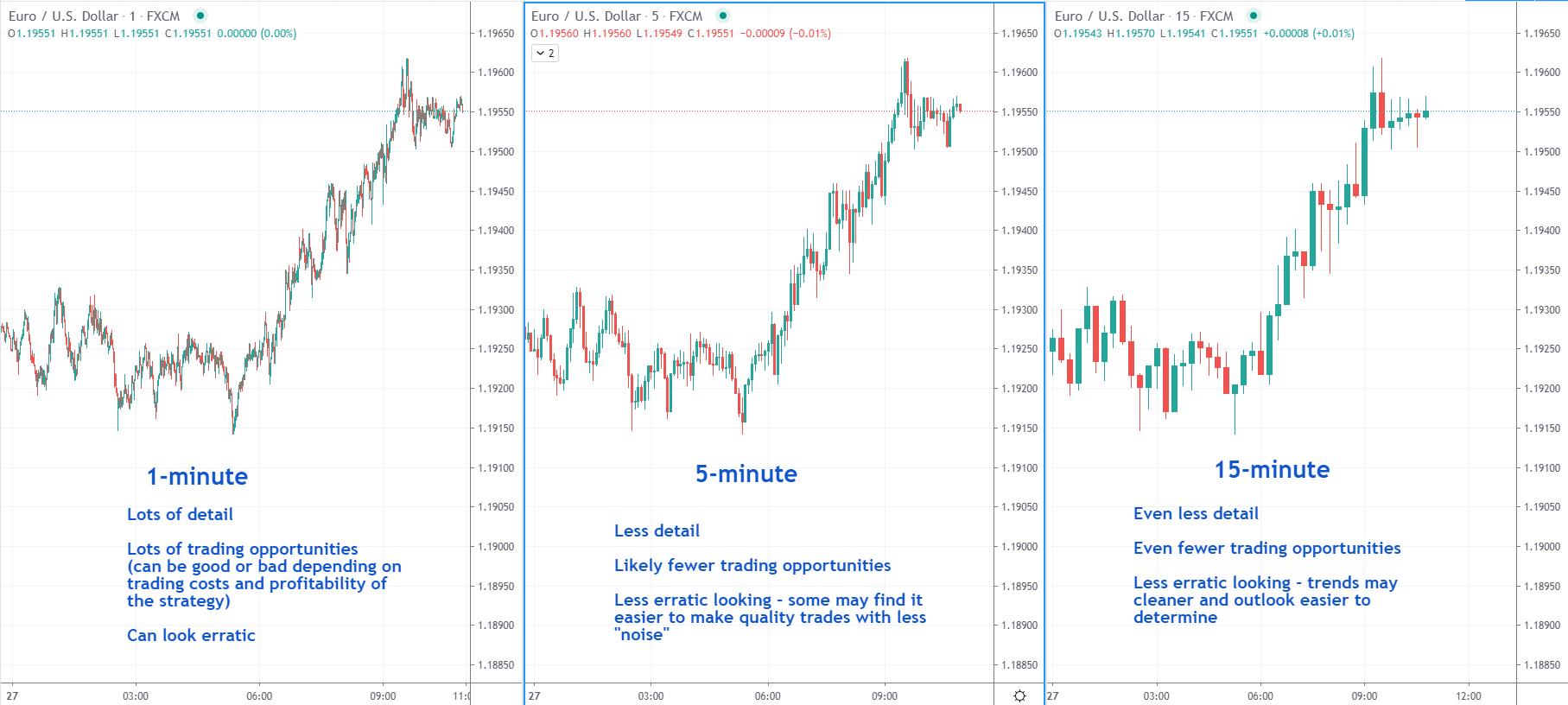Introduction
Trading cryptocurrencies has become increasingly popular in recent years, and one specific approach that has gained traction is day trading. Day trading cryptocurrency involves buying and selling digital assets within short time frames, often within a single day, to potentially profit from fluctuations in price. It requires a deep understanding of the cryptocurrency market, technical analysis skills, and the ability to make quick decisions.
Cryptocurrency, such as Bitcoin, Ethereum, and Litecoin, is a form of digital currency that uses cryptography for security and operates independently of a central bank. Unlike traditional fiat currencies, cryptocurrencies offer decentralized and transparent transactions, making them attractive to investors and traders.
Day trading cryptocurrency can be an exciting and potentially profitable endeavor, but it is not without its challenges. In this article, we will explore what day trading is, the reasons why people choose to day trade cryptocurrency, the skills and knowledge required for success, as well as some best practices and potential risks associated with this trading strategy.
It is important to note that day trading cryptocurrency is a dynamic and fast-paced activity that requires dedication, discipline, and continuous learning. It is not suitable for everyone, and individuals considering entering the world of day trading should carefully assess their risk tolerance and financial situation before getting started.
Now, let’s dive deeper into the exciting world of day trading cryptocurrency and discover what it takes to succeed in this challenging yet rewarding endeavor.
What is day trading?
Day trading is a short-term trading strategy that involves buying and selling financial instruments, including cryptocurrencies, within the same trading day. The primary goal of day trading is to take advantage of price fluctuations and make quick profits from short-term market movements.
Day traders analyze market trends, technical indicators, and other relevant factors to identify potential trading opportunities. They aim to enter and exit positions within a single day, typically within a few hours or even minutes. Unlike long-term investing, day trading focuses on capitalizing on short-term price volatility rather than holding assets for an extended period.
The fast-paced nature of day trading requires traders to make rapid decisions and execute trades swiftly. They rely heavily on technical analysis tools, such as charts, trends, and indicators, to identify patterns and determine when to enter or exit positions. Some common technical analysis tools used in day trading cryptocurrency include moving averages, support and resistance levels, and oscillators like the Relative Strength Index (RSI) and Moving Average Convergence Divergence (MACD).
It is important to note that day trading can be highly speculative and involves inherent risks. The volatile nature of cryptocurrency markets amplifies these risks, as prices can experience significant fluctuations in short periods. Traders must carefully manage their risk and use proper risk management techniques, such as setting stop-loss orders and adhering to trading plans, to protect their capital.
Moreover, day trading requires constant monitoring of the market and staying updated with relevant news and events that can impact cryptocurrency prices. Traders often utilize real-time market data feeds and analysis tools to stay informed and make informed trading decisions.
Overall, day trading provides an opportunity for active traders to potentially generate profits in a short amount of time. However, it also requires a significant amount of time, dedication, and expertise. It is crucial for aspiring day traders to understand the risks involved and develop a solid trading plan before diving into the world of day trading cryptocurrency.
What is cryptocurrency?
Cryptocurrency, also known as digital or virtual currency, is a form of decentralized digital money that employs cryptography for secure financial transactions, control additional currency unit creation, and verify the transfer of assets. Unlike traditional fiat currencies issued by central banks, cryptocurrencies operate on decentralized networks known as blockchain technology.
The most well-known cryptocurrency is Bitcoin, which was introduced in 2009 by an anonymous person or group of individuals under the pseudonym Satoshi Nakamoto. Bitcoin paved the way for the development and widespread adoption of other cryptocurrencies, such as Ethereum, Litecoin, Ripple, and many more.
One of the key characteristics of cryptocurrencies is their decentralization. They are not controlled by any central authority, like a government or financial institution, but rather by a network of computers spread across the globe. This decentralized nature ensures transparency, security, and immutability of transactions, making cryptocurrencies inherently resistant to censorship and fraud.
Transactions involving cryptocurrencies are recorded on a public ledger called a blockchain. A blockchain is a distributed and immutable database that chronologically records every transaction made with a particular cryptocurrency. This transparency allows anyone to verify transactions and creates trust among participants without the need for intermediaries.
Cryptocurrencies can be acquired through various means. Mining is a process where powerful computers solve complex mathematical problems to validate and record transactions on the blockchain. In return, miners are rewarded with newly created cryptocurrency units. Alternatively, individuals can purchase cryptocurrencies on cryptocurrency exchanges using traditional fiat currencies or other cryptocurrencies.
Beyond being a means of exchange, cryptocurrencies often serve as a store of value and investment vehicles. Some people buy and hold cryptocurrencies in the hopes that their value will increase over time, allowing them to sell at a profit in the future.
It’s worth mentioning that the cryptocurrency market is highly volatile, with prices being influenced by various factors such as market demand, regulatory developments, technological advancements, and investor sentiment. As a result, the value of cryptocurrencies can experience substantial fluctuations in short periods.
In summary, cryptocurrency is a digital form of money that utilizes cryptography and blockchain technology to secure transactions and provide transparency and decentralization. It has revolutionized the way we perceive and engage with financial systems, offering individuals greater control over their finances and opening up new opportunities for innovation and financial inclusion.
Why day trade cryptocurrency?
Day trading cryptocurrency has become a popular choice for traders for several reasons. Here are some of the key factors that attract individuals to this form of trading:
1. Volatility: The cryptocurrency market is known for its high volatility, which allows day traders to potentially profit from rapid price fluctuations. Cryptocurrencies can experience significant price movements within short time frames, creating opportunities for traders to enter and exit positions for short-term gains.
2. 24/7 Market: Unlike traditional financial markets that operate during specific hours, the cryptocurrency market is open 24/7, providing flexibility for traders to participate at any time. This around-the-clock accessibility allows day traders to take advantage of global market trends and news events, regardless of their geographic location.
3. Lower Barriers to Entry: Compared to other financial markets, such as stocks or forex, the barrier to entry for day trading cryptocurrency is relatively low. Anyone with an internet connection and a trading account can start day trading cryptocurrencies, making it accessible to a wide range of individuals.
4. Potential for High Returns: Due to the volatility of cryptocurrencies, day traders have the opportunity to make substantial profits in a short period. By accurately predicting price movements and implementing effective trading strategies, day traders can capitalize on market opportunities and generate significant returns on their investments.
5. Liquidity: The cryptocurrency market has a high level of liquidity, meaning that traders can easily buy or sell their positions without significantly impacting the market price. This liquidity ensures that day traders can quickly enter and exit positions, enabling them to take advantage of short-term price movements.
6. Technological Advancements: The cryptocurrency market is driven by technological advancements, innovative projects, and new developments. This ever-evolving space provides day traders with a constant stream of opportunities as they can trade various types of cryptocurrencies and participate in Initial Coin Offerings (ICOs) or other token sales.
7. Educational Opportunities: Day trading cryptocurrency offers an excellent opportunity to learn about financial markets, technical analysis, and trading strategies. Aspiring traders can continuously improve their skills by staying updated with market news, studying charts, and experimenting with different trading approaches.
While day trading cryptocurrency presents exciting opportunities, it is important to note that it also carries significant risk. Traders must be prepared for potential losses and implement robust risk management strategies to protect their capital. It is advisable to thoroughly research and gain sufficient knowledge before embarking on day trading activities.
Skills and knowledge required for day trading cryptocurrency
Day trading cryptocurrency requires a specific set of skills and knowledge to navigate the fast-paced and volatile nature of the market. Here are some essential skills and knowledge that aspiring day traders should possess:
1. Market Awareness: A deep understanding of the cryptocurrency market is crucial. Day traders need to stay informed about market trends, news, and events that can impact cryptocurrency prices. This includes keeping up with regulatory developments, technological advancements, and industry trends.
2. Technical Analysis: Proficiency in technical analysis is essential for day trading. Traders should be able to read and interpret price charts, identify patterns, and utilize technical indicators to make informed trading decisions. Technical analysis tools such as moving averages, Fibonacci retracements, and oscillators can help traders identify entry and exit points.
3. Risk Management: Effective risk management is a critical skill for day traders. Traders should have a clear understanding of their risk tolerance, set appropriate stop-loss orders, and manage position sizes to protect their capital. Implementing risk management techniques can help mitigate potential losses during volatile market conditions.
4. Emotional Discipline: Day trading can be emotionally challenging due to rapid price fluctuations and the pressure to make quick decisions. Traders must be able to manage their emotions, avoid impulsive trades, and stick to their trading plan. Emotional discipline plays a crucial role in maintaining consistency and making rational trading decisions.
5. Technical Skills: Day traders should be familiar with the technical aspects of trading platforms and tools. They need to understand how to place orders, execute trades quickly, set up stop-loss and take-profit levels, and utilize various order types. Proficiency in using trading software and platforms is essential to navigate the markets efficiently.
6. Continuous Learning: The cryptocurrency market is constantly evolving. Successful day traders need to have a thirst for knowledge and a commitment to ongoing learning. They should stay updated with market trends, new trading strategies, and technological advancements in the cryptocurrency space.
7. Financial Management: A solid understanding of financial management principles is crucial for day trading. Traders must have basic knowledge of concepts such as leverage, margin trading, and portfolio diversification. They should carefully manage their capital and budget their trading activities to minimize risk and maximize potential returns.
8. Patience and Discipline: Day traders should have patience and discipline. It is essential to wait for the right trading opportunities and avoid overtrading. Following a well-defined trading strategy, sticking to predetermined entry and exit points, and avoiding emotional decision-making will contribute to long-term success.
Developing these skills and acquiring knowledge requires time, practice, and a commitment to continuous improvement. Aspiring day traders should consider starting with a small trading capital and gradually increase their exposure as they gain experience and confidence in their trading abilities.
Setting up a cryptocurrency trading account
To engage in day trading cryptocurrency, it is essential to set up a cryptocurrency trading account. Here are the steps to get started:
1. Choose a reputable cryptocurrency exchange: There are numerous cryptocurrency exchanges available, each with its own features and offerings. Research and choose a reputable exchange that supports a wide range of cryptocurrencies and has a user-friendly interface.
2. Sign up and complete the verification process: Create an account on the chosen cryptocurrency exchange. This typically involves providing personal information and verifying your identity. Follow the exchange’s instructions to complete the verification process, which may involve submitting identification documents.
3. Secure your account: Cryptocurrency exchanges are prime targets for hackers. Take steps to secure your account by enabling two-factor authentication (2FA) and using strong, unique passwords. Consider using a hardware wallet for additional security.
4. Fund your account: Deposit funds into your trading account. This can be done by transferring cryptocurrencies from another wallet or by depositing fiat currency through bank transfers, credit/debit cards, or other supported payment methods. Note that some exchanges have minimum deposit requirements.
5. Familiarize yourself with the trading interface: Spend time understanding the trading interface of the exchange. Explore the available charts, order types, and trading tools. Learn how to place buy and sell orders and how to use stop-loss and take-profit orders to manage your trades.
6. Practice with a demo account: Some exchanges provide a demo or simulated trading account feature. Utilize this to practice trading strategies and get familiar with the platform without risking real funds. This can be a valuable learning experience for novice traders.
7. Develop a trading plan: Before actively trading, develop a well-defined trading plan. Decide on your risk tolerance, preferred trading pairs, timeframes, and trading strategy. Consider factors such as market analysis, entry and exit points, and risk management techniques to guide your trading decisions.
8. Start with small trades: To gain experience and confidence, start with small trades and gradually increase your position sizes as you become more comfortable with the trading process. Avoid risking a significant portion of your capital on individual trades.
9. Monitor the market: Stay updated with market news, price movements, and relevant developments. Utilize technical analysis tools and indicators to identify potential trading opportunities. Set alerts and reminders to stay informed about market trends and important events.
10. Evaluate and adjust your strategy: Regularly review your trading performance and evaluate the effectiveness of your strategy. Identify strengths and weaknesses and make necessary adjustments to improve your trading approach. Continuously learning and adapting is key to long-term success.
Remember that trading cryptocurrency involves risks, and it is important to only invest what you can afford to lose. Be diligent, practice sound risk management, and remain disciplined in your trading activities.
Technical analysis indicators for day trading
Technical analysis is a vital tool for day traders to analyze price patterns, identify trends, and make informed trading decisions. Here are some common technical analysis indicators that can be useful in day trading:
1. Moving Averages (MA): Moving averages are widely used in technical analysis to identify trends and support/resistance levels. The Simple Moving Average (SMA) calculates the average price over a specific period, while the Exponential Moving Average (EMA) gives more weight to recent prices. Traders often look for crossovers between different moving averages as potential buying or selling signals.
2. Relative Strength Index (RSI): The RSI is a momentum oscillator that measures the speed and change of price movements. It ranges from 0 to 100 and is commonly used to identify overbought and oversold conditions. Traders look for RSI values above 70 as potential indications of overbought conditions and values below 30 as potential indications of oversold conditions.
3. Bollinger Bands: Bollinger Bands consist of a moving average line and two standard deviation lines above and below it. They are used to identify price volatility and potential reversal points. When the price reaches the upper band, it may indicate overbought conditions, while reaching the lower band may indicate oversold conditions.
4. MACD (Moving Average Convergence Divergence): MACD is a popular indicator that measures the relationship between two moving averages. It consists of a MACD line, a signal line, and a histogram. Traders look for MACD line crossovers with the signal line as potential entry or exit signals. Divergence between the MACD and the price can also provide insights into potential trend reversals.
5. Fibonacci Retracement: Fibonacci retracement levels are based on a sequence of numbers and ratios derived from the Fibonacci sequence. Traders use these retracement levels to identify potential support and resistance levels. The most common retracement levels are 38.2%, 50%, and 61.8%. These levels can help traders identify potential areas of price reversal or continuation.
6. Volume: Volume is an important indicator that measures the number of shares or contracts traded in a particular asset. High volume often indicates strong market participation and can validate the significance of price movements. Traders often look for volume spikes or divergences to confirm the strength of a trend or identify potential reversals.
7. Support and Resistance: Support and resistance levels are horizontal price levels where the price has historically had difficulty moving above (resistance) or below (support). These levels can act as barriers that influence price movements. Traders use support and resistance levels to identify potential entry and exit points.
8. Candlestick Patterns: Candlestick patterns are graphical representations of price movements that provide valuable insights into market sentiment. Patterns such as doji, engulfing, hammer, and shooting star can indicate potential trend reversals or continuation. Traders often combine candlestick patterns with other technical indicators for more accurate analysis.
It is important to remember that technical analysis indicators should be used in conjunction with other factors such as market news, volume, and overall market sentiment. No single indicator can guarantee accurate predictions, and traders should exercise caution and consider multiple factors before making trading decisions.
Developing a trading strategy
Developing a well-defined trading strategy is crucial for success in day trading. A trading strategy outlines the rules and guidelines that traders follow to enter and exit positions. Here are some key steps to consider when developing a trading strategy:
1. Determine your trading goals: Before creating a strategy, it is important to define your trading goals. Consider your risk tolerance, profit targets, and the time commitment you can dedicate to trading. Having clear goals will help you tailor your strategy to your specific needs.
2. Choose your preferred trading style: There are various trading styles, including scalping, swing trading, and momentum trading. Select a trading style that aligns with your personality, time availability, and risk tolerance. Each style has its own advantages and disadvantages, so choose one that suits your preferences and trading goals.
3. Identify your trading assets: Decide which cryptocurrencies or trading pairs you want to focus on. Different cryptocurrencies exhibit different levels of volatility and liquidity, so it is important to choose assets that are suitable for day trading.
4. Perform technical analysis: Utilize technical analysis tools and indicators to analyze price patterns, identify trends, and determine potential entry and exit points. Consider using a combination of indicators to validate signals and reduce the risk of false signals.
5. Set your trading rules: Define specific rules for entering and exiting trades based on your analysis. Determine the criteria for opening a position, such as a specific combination of indicators or the occurrence of a certain candlestick pattern. Establish rules for setting stop-loss and take-profit levels to manage your risk and lock in profits.
6. Implement risk management techniques: Risk management is a critical aspect of any trading strategy. Determine the maximum amount of capital you are willing to risk per trade or per day. Set appropriate stop-loss orders to limit potential losses. Adjust your position sizing based on your risk tolerance and the volatility of the assets you are trading.
7. Practice and backtest your strategy: Use a demo or simulated trading account to practice your strategy without risking real money. Evaluate the performance of your strategy by backtesting it on historical data. This will help you assess the effectiveness of your strategy and identify any necessary adjustments.
8. Maintain a trading journal: Keep a record of your trades and analyze your performance regularly. Note down the reasons behind your trading decisions, track your wins and losses, and identify any patterns or areas for improvement. A trading journal can provide valuable insights into your trading strategy’s effectiveness and help you make data-driven adjustments.
9. Continuously educate yourself: The cryptocurrency market is dynamic, and trading strategies need to evolve with changing market conditions. Stay updated with market trends, news, and new trading techniques. Continuously educate yourself through books, articles, courses, and by engaging with the trading community.
Remember that developing a trading strategy takes time and practice. Be prepared to make adjustments along the way as you learn from your experiences. Stick to your strategy and avoid making impulsive decisions based on emotions or short-term fluctuations in the market. Consistency and discipline are key to implementing a successful trading strategy.
Risk management in day trading cryptocurrency
Risk management is a critical aspect of day trading cryptocurrency, as it helps traders protect their capital and mitigate potential losses. Here are some key risk management techniques to consider:
1. Determine your risk tolerance: Before entering any trade, assess your risk tolerance. Understand how much risk you are willing to take on and how much capital you can afford to lose. This will help you set realistic expectations and avoid making impulsive decisions based on emotions.
2. Use stop-loss orders: Set stop-loss orders for every trade to limit potential losses. A stop-loss order automatically closes your position if the price reaches a predefined level. Determine an appropriate stop-loss level based on your risk tolerance and the volatility of the cryptocurrency you are trading.
3. Set profit targets: Alongside stop-loss orders, establish profit targets for your trades. Determine the point at which you will exit a trade to secure profits. Setting profit targets ensures that you don’t hold onto a trade for too long, allowing you to capture gains before the market reverses.
4. Implement proper position sizing: Position sizing refers to determining the appropriate amount of capital to allocate to each trade. Avoid risking a significant portion of your capital on a single trade. Consider using a percentage-based position sizing approach, such as risking only 1-2% of your capital on any given trade. This helps to minimize losses and protect your overall trading account.
5. Diversify your portfolio: Diversification is a risk management strategy that involves spreading your investments across different cryptocurrencies or trading pairs. By diversifying your portfolio, you reduce the risk of being heavily impacted by the poor performance of a single asset. However, be cautious not to over-diversify, as it may become difficult to effectively manage your positions.
6. Avoid overtrading: Overtrading can result in impulsive and emotionally-driven decisions, leading to excessive risk-taking. Stick to your trading plan and be patient for high-quality setups. Avoid chasing after every trade opportunity that presents itself, as this can increase the likelihood of losses.
7. Stay updated with market news: The cryptocurrency market is influenced by news, events, and regulatory announcements. Stay informed about market trends and news that may impact cryptocurrency prices. Unexpected news can cause significant price fluctuations, so it is important to consider these factors in your risk analysis.
8. Continuously assess and adjust your strategy: Regularly evaluate the performance of your trading strategy and adapt as necessary. Identify areas of improvement and make adjustments to your risk management techniques. A strategy that worked well in the past may need adjustments to align with current market conditions.
9. Keep emotions in check: Emotions can cloud judgment and lead to poor decision-making. Successful day traders maintain emotional discipline and stick to their predetermined risk management rules. Avoid making impulsive decisions driven by fear or greed and base your actions on careful analysis and adherence to your trading plan.
Risk will always be present in trading, but by implementing effective risk management techniques, day traders can better protect their capital and increase their chances of long-term success in the cryptocurrency market.
Best practices for day trading cryptocurrency
Day trading cryptocurrency involves fast-paced decision-making and navigating a highly volatile market. Adopting best practices can help increase your chances of success and minimize risks. Here are some key best practices for day trading cryptocurrency:
1. Educate Yourself: Take the time to educate yourself about cryptocurrencies, trading strategies, and market trends. Stay updated with news and developments in the cryptocurrency space. Continuously expand your knowledge through books, articles, courses, and by engaging with the trading community. A solid understanding of the market will enhance your decision-making capabilities.
2. Start with a Trading Plan: Develop a well-defined trading plan that outlines your goals, risk tolerance, preferred trading style, and strategy. Your plan should include rules for entering and exiting trades, risk management techniques, and guidelines for adjusting your strategy based on market conditions. Adhering to a trading plan can help you make rational decisions and minimize impulsive actions.
3. Practice Proper Risk Management: Implement risk management techniques such as setting appropriate stop-loss orders, diversifying your portfolio, and managing position sizes. Determine how much capital you are willing to risk per trade or per day and avoid risking a significant portion of your capital at any given time. Effective risk management is crucial for preserving your capital and protecting against unnecessary losses.
4. Use Demo Accounts: Utilize demo or simulated trading accounts provided by cryptocurrency exchanges to practice your trading strategies and become familiar with the platform. This allows you to gain experience and test different approaches without risking real money. Use this opportunity to refine your trading techniques and build confidence before trading with real funds.
5. Start Small: Begin with small trade sizes and gradually increase as you gain experience and confidence. Starting small helps manage risk and allows you to learn from your trades without significant financial consequences. As you develop consistency and profitable results, you can gradually increase your position sizes.
6. Utilize Stop-Loss and Take-Profit Orders: Take advantage of stop-loss orders to protect your capital from excessive losses. Set take-profit orders to secure profits when a trade reaches your target. These orders help manage risk and prevent emotions from driving your decision-making process.
7. Practice Emotional Discipline: Day trading can evoke emotions such as fear and greed. It is important to maintain emotional discipline and make rational decisions based on your trading plan. Avoid chasing losses or getting overly euphoric during winning streaks. Stick to your predetermined rules and remain level-headed in all trading situations.
8. Learn Technical Analysis: Technical analysis is a valuable tool for day traders. Study and understand chart patterns, indicators, and other technical tools to help identify potential trade setups and make informed decisions. Combine technical analysis with fundamental analysis to gain a holistic understanding of the cryptocurrency market.
9. Keep Detailed Records: Maintain a detailed trading journal to track your trades, including entry and exit points, profit or loss, and the reasoning behind each trade. Reviewing your journal regularly can help you identify patterns, evaluate the effectiveness of your trading strategy, and make data-driven adjustments for future trades.
10. Continuously Learn and Evolve: The cryptocurrency market is dynamic and constantly evolving. Stay updated with market trends, technological advancements, and regulatory developments. Engage with the trading community, participate in educational webinars or workshops, and continuously seek opportunities to improve your trading skills and knowledge.
By adopting these best practices, you can better navigate the challenges of day trading cryptocurrency and increase your chances of achieving consistent profitability in the long run.
The pros and cons of day trading cryptocurrency
Day trading cryptocurrency offers both advantages and disadvantages. Understanding the pros and cons can help you make an informed decision about whether day trading cryptocurrency aligns with your trading goals and risk tolerance. Here are the key pros and cons to consider:
Pros:
1. Potential for Profitability: Day trading cryptocurrency provides opportunities for profit with its high volatility. Traders can take advantage of price movements and make quick profits on short-term trades if executed correctly.
2. Accessibility: With the availability of online cryptocurrency exchanges, day trading has become more accessible. Anyone with an internet connection and a trading account can participate in day trading cryptocurrency.
3. 24/7 Market: The cryptocurrency market operates 24/7, allowing traders to actively engage in trading at any time. This flexibility accommodates different trading schedules and time zones.
4. Liquidity: Cryptocurrency markets have high liquidity, meaning that traders can easily buy and sell their positions without significantly impacting market prices. This enables traders to enter and exit positions swiftly and at desired price levels.
5. Learning Opportunities: Day trading cryptocurrency provides opportunities for continuous learning. Traders gain insights into market trends, technical analysis, risk management, and trading strategies. The learning experience can be valuable for traders looking to improve their skills and knowledge.
Cons:
1. Volatility and Risk: The high volatility in the cryptocurrency market can lead to substantial price swings in short periods. While this presents opportunities for profit, it also increases the risk of significant losses. Traders must be prepared for potential volatility and properly manage their risk.
2. Emotional and Psychological Stress: Day trading can be emotionally challenging due to the fast-paced nature and potential for rapid losses. The pressure to make quick decisions and the rollercoaster of emotions can cause stress and negatively impact trading performance if not properly managed.
3. Market Manipulation: Cryptocurrency markets, due to their relatively young and unregulated nature, can be susceptible to market manipulation. Traders need to remain vigilant and stay updated with news and developments to identify potential manipulative practices that could affect their trading activities.
4. Time Commitment: Day trading requires a significant time commitment due to the need for constant monitoring of price movements and market news. Traders must dedicate sufficient time to perform technical analysis, research, and execute trades in a timely manner.
5. Financial Losses: There is always a risk of financial losses in trading, and day trading cryptocurrency is no exception. Traders must be prepared for the possibility of losing their investment capital. It is crucial to only trade with funds that you can afford to lose without negatively impacting your financial situation.
It is important to weigh the pros and cons of day trading cryptocurrency and consider your risk tolerance, financial situation, and trading goals. Dedicating time to proper education, risk management, and emotional discipline can help mitigate the risks associated with day trading and increase the chances of achieving profitability.
Conclusion
Day trading cryptocurrency can be an exciting and potentially profitable endeavor for those willing to put in the time and effort to learn and adapt to the fast-paced nature of the market. It offers accessibility, the opportunity for quick profits, and the ability to trade around the clock. However, it also comes with risks and challenges that traders must carefully navigate.
To succeed in day trading cryptocurrency, it is essential to have a solid understanding of the market, technical analysis tools, and risk management techniques. Developing a well-defined trading strategy, practicing emotional discipline, and continuously learning and adapting are key factors for long-term success.
It is crucial to approach day trading cryptocurrency with caution, considering your risk tolerance and financial situation. Start with small trades and gradually increase your position sizes as you gain experience and confidence. Keep in mind that day trading requires dedicated time and effort, and emotional discipline is necessary to avoid making impulsive decisions based on short-term market fluctuations.
Day trading cryptocurrency is not suitable for everyone. It requires active involvement, continuous learning, and the ability to manage risks. It is important to be aware of the potential for financial losses and only trade with funds that you can afford to lose.
By following best practices, including technical analysis, risk management, and continuous education, day traders can increase their chances of success in the cryptocurrency market. Understanding the pros and cons, and the time commitment involved, will help determine whether day trading cryptocurrency aligns with your trading goals and risk tolerance.
Remember, success in day trading cryptocurrency is not guaranteed, and it is crucial to make informed decisions based on thorough analysis and careful consideration of the risks involved. With dedication, discipline, and persistence, day trading cryptocurrency can be a rewarding and potentially profitable venture.

























